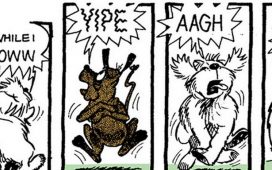
The latest lifestyle, fashion and travel trends
The latest lifestyle, fashion and travel trends
Alex Pedley is the creator of The MVEMENT Method, a wellness programme which focuses on the six pillars of: habits, nutrition, movement, exercise, mental wellbeing and sleep. This week, exclusively for the Evening Standard, he breaks down how even the busiest of people can make time to exercise.
There is a belief that to get in shape we always have to workout for extensive periods of time. Well, this is simply not true. It’s time to change the conversation from ‘no pain, no gain’ to “less can be more.’
Walk into any of the gyms in central London at lunchtime and you will find professionals doing a form of high intensity interval training (HIIT). HIIT involves short bursts of intense activity followed by a short recovery period. Spin classes, circuit training and Bootcamps all fall into this category.
Two of the main reasons people are choosing HIIT is to lose weight and because it allows them to completely switch off from their day.
HIIT certainly has its benefits – especially that it causes excess post exercise oxygen consumption (EPOC) or afterburn. This is the amount of oxygen required to restore your body to its normal, resting level of metabolic function called homeostasis. This can increase calorie expenditure for up to 48 hours after exercise.
However, constant HIIT classes can also have negative impacts. This is because we have two main energy systems – aerobic and anaerobic. The aerobic system primarily uses oxygen and is associated with fatigue free, fat burning activities such as walking, jogging or cycling. The anaerobic system doesn’t require as much oxygen and is associated with high intensity, sugar burning activities such as sprinting.
If you only do intense workouts or you are out of shape then your aerobic system will likely be underdeveloped meaning that you will rely mostly on your anaerobic system. This will result in feeling more stressed, and you will predominantly burn glucose instead of fat as fuel. This is not good if you are already highly stressed and want to lose weight.
A poll of 4,619 people by YouGov found that 74 per cent of respondents were so stressed out that they felt unable to cope or were overwhelmed at some that year. Adding another stressor, in the form of HIIT, can quickly lead to over training and burnout .
Exercise can be used to unwind and increase our tolerance to stress. This is where lower intensity activities such as brisk walking, light jogging and cycling can be so beneficial both mentally and physically.
A study of type 2 diabetics taken over six months was featured in the Indian Heart Journal. It showed that moderate intensity aerobic exercise improves the parasympathetic nervous response. This is your state of rest and digest, the calm cousin to fight or flight. Research featured in Sports Medicine confirmed these finding for non-diabetics.
That said, all forms of exercise have their benefits. You simply need to find the right solution to match your needs.
Best dance fitness classes in London
1/7
2/7
3/7
4/7
5/7
6/7
7/7
1/7
2/7
3/7
4/7
5/7
6/7
7/7
Below are some simple tips that you can use to see fast and tangible results.
1. Get really specific with your goal
If your goal is to look good and feel better then that is great, but how do you define success for this?
Instead, create a definable long-term goal and then set bi-weekly achievable targets so that you start to feel the buzz of constant progress. This will quickly become addictive.
2. Create a base
This includes an aerobic base, a base of good mobility and a strength base.
HIIT has its place, but first you need to create the framework for your body to be able to tolerate this form of intense workout.
3. Plan your workouts to match your goal, current fitness level and schedule
Two of the most common mistakes I see is attempting to fit too many sessions into an already packed schedule and working out intensely in every session.
The key is to find an exercise solution that matches your needs. This will make training enjoyable, and allow you to create a sustainable habit.
4. Mix up the intensity of your workouts
Recovery sessions are just as important as harder workouts. If you are scheduled for a workout and feel tired then go for a lighter session. Match your training intensity to your current state.
5. Get plenty of recovery
We adapt and progress when we rest and recover. Schedule recovery days and get plenty of good quality sleep.
Exercise should be fun and match your needs. Whether your goal is to climb to Everest Base Camp or simply look and feel better, there is an exercise solution for you. You do not need to workout intensely in each session to see amazing results. Remember: less can be more.
10 Minutes Matter by Alex Pedley will be published this autumn.













